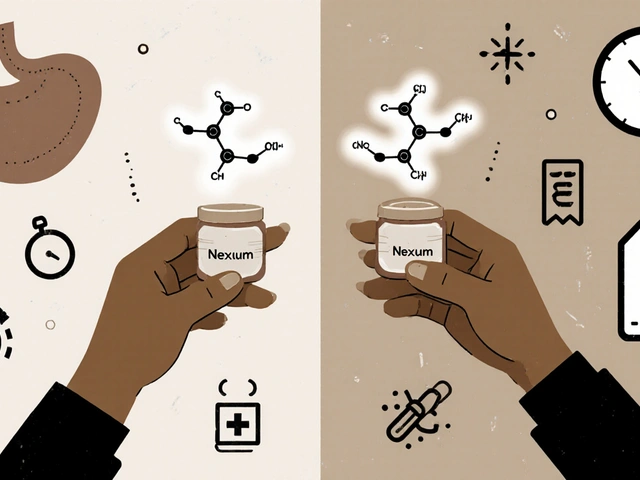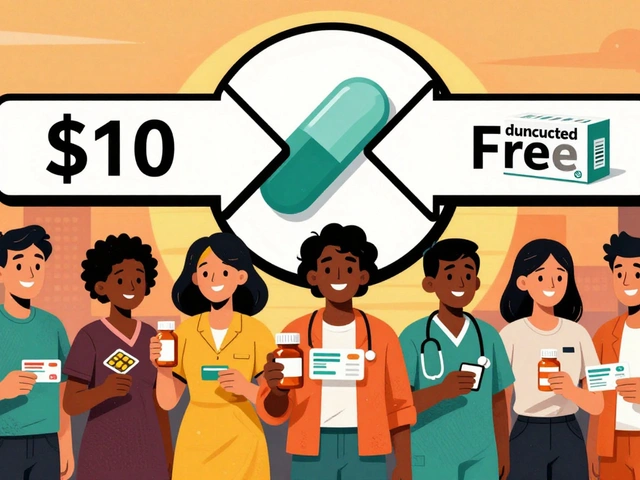Warfarin is a prescription blood‑thinner that doctors use to prevent clots from forming or getting bigger. If you have a history of deep‑vein thrombosis, atrial fibrillation, or a heart valve, chances are your doctor has mentioned warfarin at some point. It works by slowing down the vitamin K cycle, which your body needs to make clotting proteins. The result is thinner blood that’s less likely to block a vessel.
Because warfarin affects clotting, you’ll hear a lot about "INR" numbers. INR stands for International Normalized Ratio – it’s a lab test that tells you how long it takes your blood to clot. Most patients aim for an INR between 2.0 and 3.0, but your doctor may set a different target based on your condition. Keeping the INR in range is the key to staying safe on warfarin.
Think of vitamin K as a builder that puts together the scaffolding for blood clots. Warfarin tells the body to use less vitamin K, so the scaffolding is weaker and clots take longer to form. This doesn’t stop clotting altogether – you still need some clotting ability to stop a cut from bleeding – but it reduces the risk of dangerous clots forming inside veins or arteries.
The drug’s effect isn’t instant. It can take a few days for blood levels to shift enough to change your INR. That’s why doctors start with a low dose and adjust it based on weekly INR results until they find the sweet spot.
1. Take it at the same time every day. A consistent schedule helps keep your INR steady. Setting an alarm works for most people.
2. Watch your diet. Foods high in vitamin K – like leafy greens (spinach, kale, broccoli) – can lower warfarin’s effect. You don’t have to avoid them, but try to eat similar portions each day.
3. Tell every health professional you see that you’re on warfarin. Dentists, surgeons, and even pharmacists need to know because many procedures or meds can raise bleeding risk.
4. Know common drug interactions. Over‑the‑counter pain relievers like ibuprofen, some antibiotics (e.g., trimethoprim‑sulfamethoxazole), and certain herbal supplements (ginkgo, St. John’s wort) can swing your INR up or down. Always ask before adding a new medication.
5. Watch for signs of bleeding. Unusual bruising, nosebleeds, blood in urine or stool, or prolonged bleeding from cuts mean your blood might be too thin. Contact your doctor right away if these happen.
6. Keep a log. Write down your dose, INR results, any new meds, and how you feel. This makes doctor visits smoother and helps spot patterns.
Warfarin can feel intimidating because of the monitoring, but most patients manage it well once they get the routine down. If you miss a dose, take it as soon as you remember—unless it’s almost time for the next dose, then skip the missed one and continue with your regular schedule. Never double‑dose to catch up.
Finally, remember that warfarin isn’t the only option. Newer oral anticoagulants (often called NOACs or DOACs) like apixaban and rivaroxaban don’t require regular INR checks, but they aren’t right for everyone. Talk to your doctor about the best choice for your health situation.
Staying on warfarin is a partnership between you and your healthcare team. By keeping a steady routine, watching your diet, and staying on top of INR tests, you can reduce clot risks while avoiding dangerous bleeding. If anything feels off, reach out sooner rather than later – it’s better to be safe and get a quick check than to wait and risk complications.

Learn how warfarin interacts with kidney disease, dosing tips, risks, and alternatives to keep you safe and in control of your anticoagulation.

Benzodiazepines like Xanax and Ativan work fast for anxiety but carry serious risks when mixed with opioids, alcohol, or sleep meds. Learn the real dangers, safe alternatives, and what to do if you're already on one.

A clear, side‑by‑side comparison of Decadron (dexamethasone) and common steroid alternatives, covering potency, dosing, uses, side‑effects, and safety tips.

Compare Nexium (esomeprazole) with generic alternatives like omeprazole, lansoprazole, and pantoprazole. Learn which PPI works best for acid reflux, how to switch safely, and when lifestyle changes can replace medication.

Discover seven effective alternatives to Diclofenac in 2025. Each option is explored in terms of benefits and drawbacks, offering insight into modern pain management methods. Learn the unique features of each alternative, including their impacts on different types of pain and side effects. Whether you're managing chronic pain or seeking a safer medication, this guide provides valuable information for better health decisions.

Prescription assistance programs from drug manufacturers help millions afford costly medications. Learn how copay cards and PAPs work, who qualifies, what you can save, and the hidden rules that could block your help.